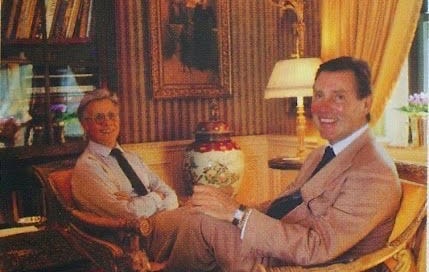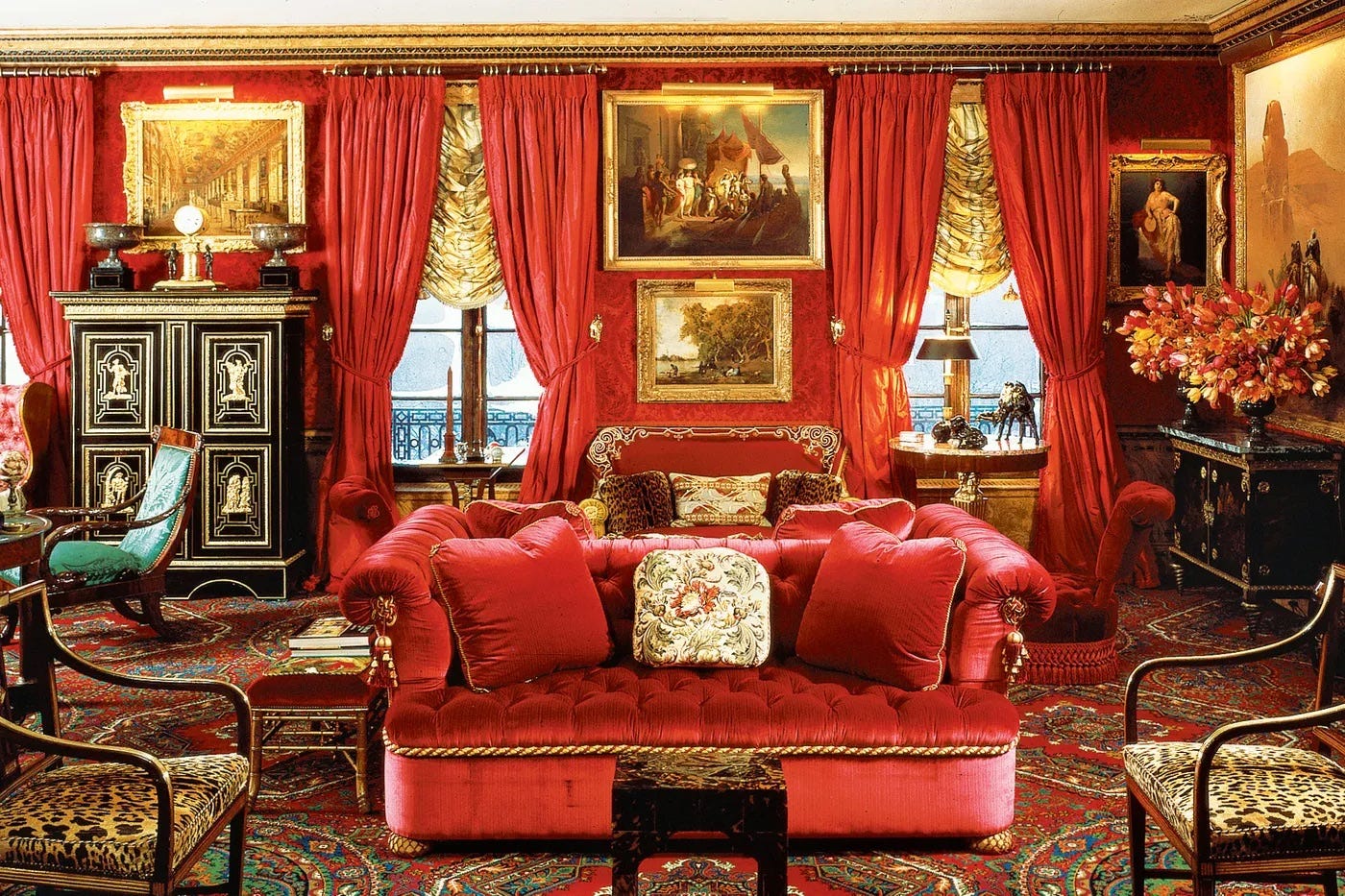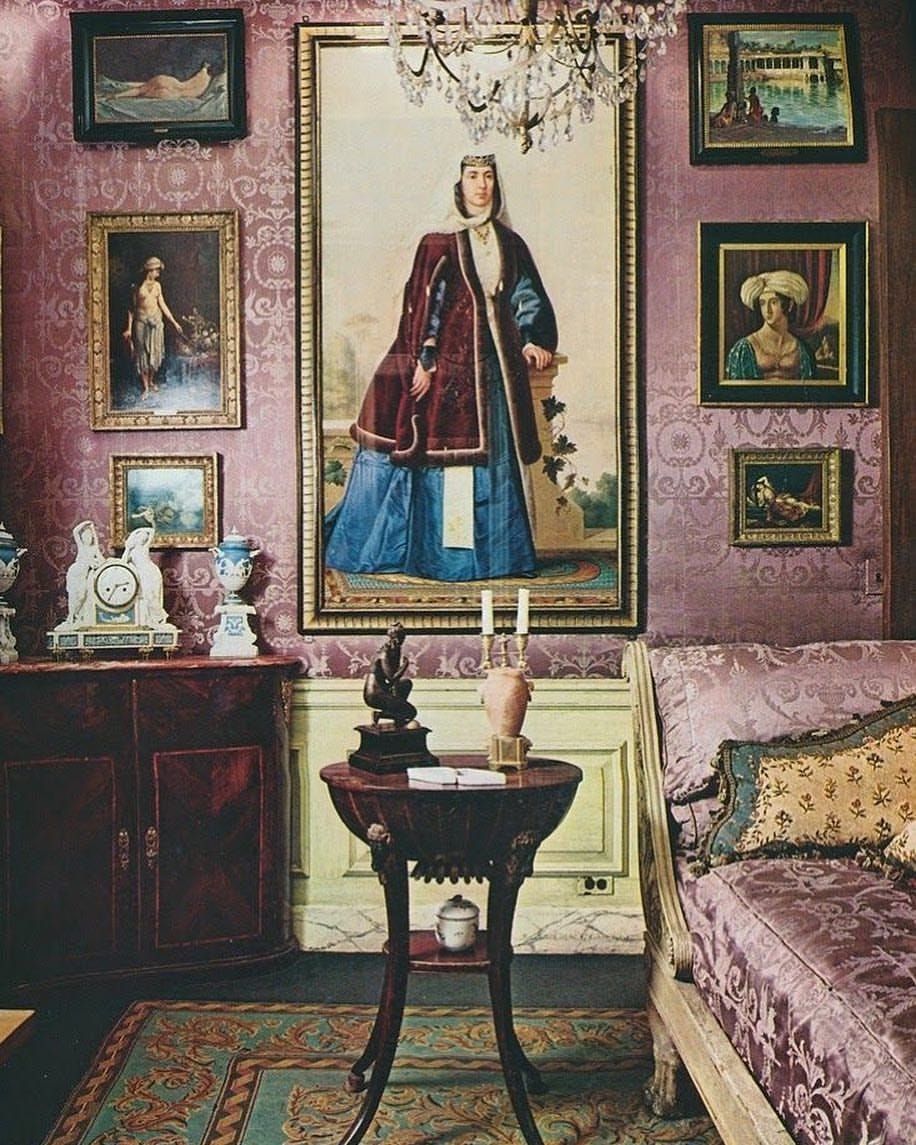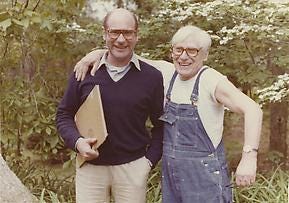Adorable Story #9: Vincent Fourcade
Let's dive into the opulent world of Denning & Fourcade Inc.
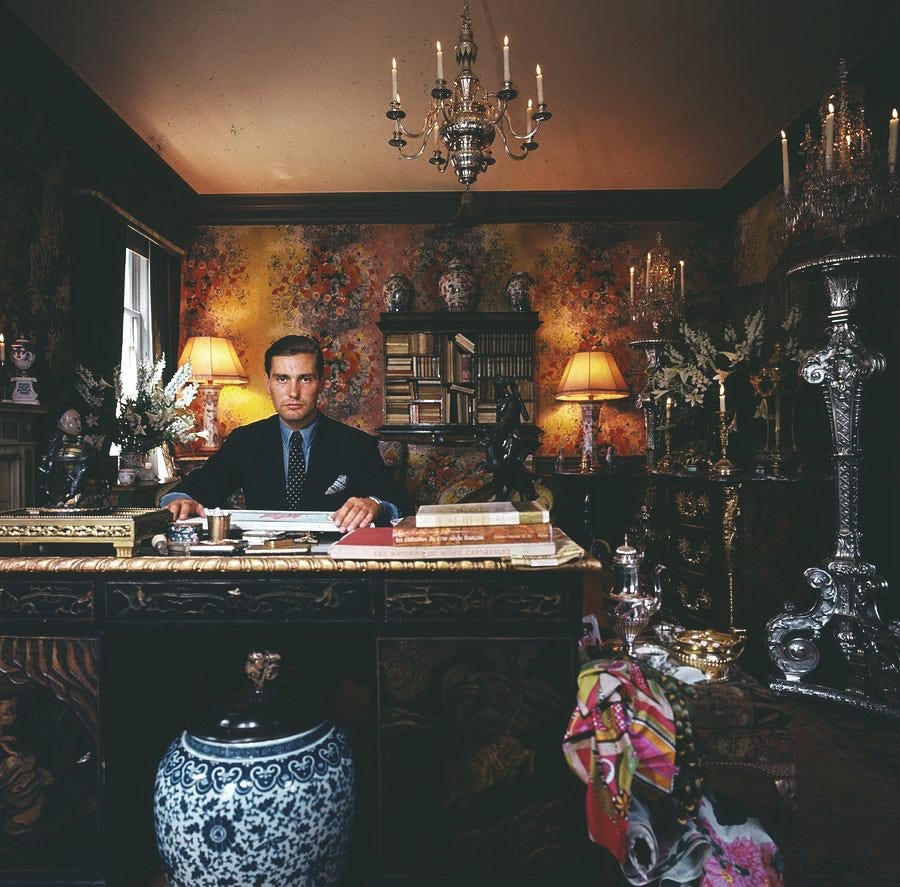
Vincent Gabriel Fourcade (February 27, 1934 – December 23, 1992) was a French interior designer and the business and life partner of Robert Denning (March 13, 1927 – August 26, 2005).
Vincent Fourcade was a son of a French banking family (he had grown up with the Rothschilds), while Robert Denning, a protégé of Mexican-born designer Edgar deEvia, was one of several design leaders raised in the Jewish community in the Bronx, along with Calvin Klein and Ralph Lauren.
"I learned my trade by going out every evening as a young man,"1 Vincent told art historian Rosamond Bernier.
"I went to every pretty house in France and Italy and other places too, and I remembered them all, even down to what was on each little table."
Vincent was educated at University College London: by 24 he had left his career in banking to become an interior decorator and in 1959 he moved from Paris to New York, where he met Robert Denning.
In 1960, the two joined forces and formed the interior design firm of Denning & Fourcade, Inc., which would for over forty-five years set a standard for a list of clients that reads like a social registry.
Fourcade famously once said:
"Outrageous luxury is what our clients want. We have taught them to prefer excess.”
This philosophy guided the duo's work, as they created opulent and lavish interiors for their well-heeled clientele.
Their very first clients were the American socialite and owner of thoroughbred steeplechase racehorses Lillian Bostwick and her husband, the financier, tennis player and racehorse owner, Ogden Phipps (a distant relative of Nonie Phipps, featured in the Adorable Story #6) whom they entertained, together with others from New York society, in the opulent Rhinelander Mansion, which Denning shared at the time with deEvia.
Their interiors came to be known as the “Style Rothschild”, which was frequently copied around the world. Indeed, a home decorated by Denning & Fourcade became such a symbol of wealth and social status that the apartment decorated for the movie version of Tom Wolfe's novel "The Bonfire of the Vanities" was patterned after one of Denning & Fourcade's designs.
The duo's signature style combined elements of French neoclassicism, English country house charm, and bold contemporary touches: the result was a harmonious blend of old-world elegance and modern sophistication.
They were not afraid to mix patterns, textures, and colors, creating interiors that were both visually stunning and comfortable for their clients to live in.
Early clients included old friends that Fourcade had known socially, such as Lazard Freres’ Senior Partner and legendary investment banker Michel David-Weill, Carolyne Roehm and her husband, the financier Henry Kravis, Fiat heiress Susanna Agnelli, Françoise and Oscar de la Renta and Jackie Kennedy.
The pair's work on the Hélène and Michel David-Weill residence in New York City solidified their reputation as the go-to designers for the upper echelons of society. Throughout the 1960s and 1970s, their client roster expanded to include European aristocracy, Hollywood celebrities, and international business magnates.
In 1975, they were referred to in New York magazine as "...the Odd Couple. Boyish, down-to-earth Denning is the hardest worker, while Fourcade sniffs the client air to gauge if it's socially registered before he goes beyond the fringe."2
Their unique, signature style can be briefly summarised as follows: the art was often featured prominently (e.g., Giambologna bronzes and Clodion terra-cottas), with large-scale antiques signed by renowned cabinetmakers (Adam Weisweiler, Georges Jacob, Thomas Hope), extravagant accessories (Napoleon III & Savonnerie carpets, fringed silk lampshades), and regal fabrics (garnet damask, gas-blue brocade, richly-hued velvets).
Multi-layers, unexpected color & fabric combinations and fur bedspreads were de rigueur, and a touch of red was always present.
According to Fourcade,
"a room without red was like a woman without lipstick."
In the 1980s, Denning & Fourcade's portfolio continued to grow, and their influence on interior design became even more widespread. Their projects during this time included the renovation of the Hotel de Crillon in Paris, the restoration of a historic villa in the South of France, and even the design of a private jet for a Middle Eastern royal family.
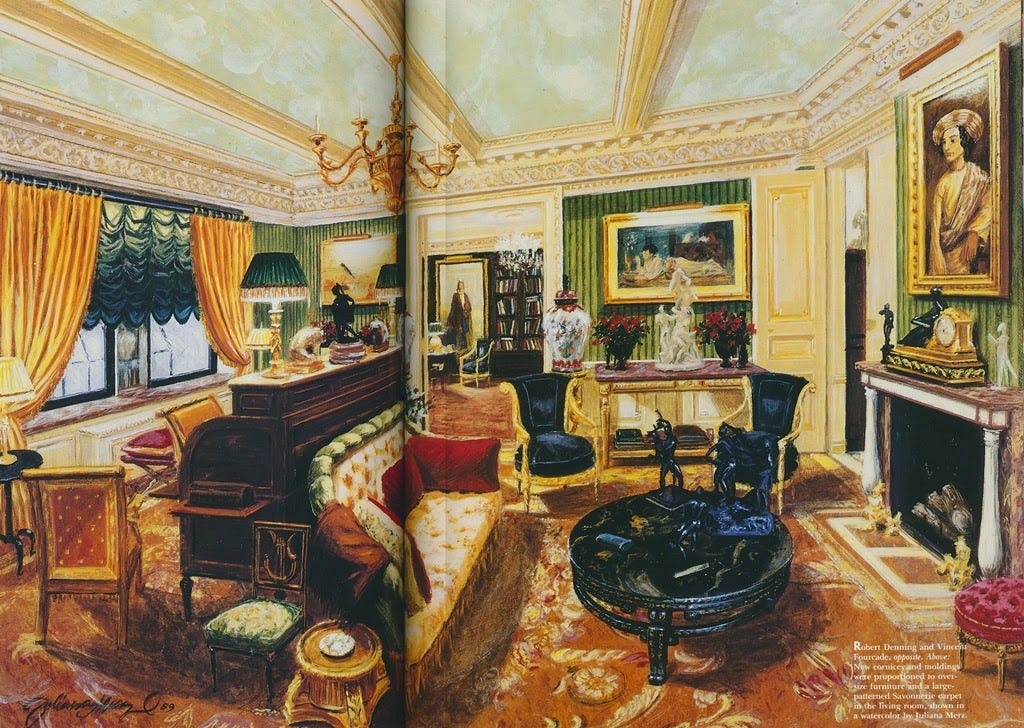
They were known for their "Proust-must-have-slept-here settings for a clientele with anything but American tastes."3
***
Early in the 1980s, Fourcade contracted AIDS: he kept his looks and strength through-out most of that decade as Denning and he would divide their time between New York and Paris, crossing the Atlantic on the Concorde.
The pair's commitment to their work and to each other remained unwavering, even as Fourcade's health declined towards the end of the decade.
Vincent’s older brother Xavier Fourcade — the internationally known contemporary art dealer, who represented, among others, Willem de Kooning, Joan Mitchell, Raoul Hague and Malcolm Morley — died of the same disease in 1987, in New York City.
The loss of his brother was a profound blow to Vincent and, by 1990, the disease began to take control of Fourcade's life.
Despite his deteriorating health, he remained dedicated to his craft, and together with Denning, they completed several notable projects during this time: these included the redecoration of the famed Parisian nightclub, Le Palace, and the design of a luxurious ski chalet in Gstaad, Switzerland.
In early 1992, Denning and Fourcade, with the help of a nurse, took the Concorde one last time to Paris, where Fourcade would live out his remaining days in their apartment at 16 rue de Chazelles, right opposite of Parc Monceau.
Their elegant Parisian home, filled with treasured antiques, beautiful textiles, and a carefully curated art collection, served as a testament to the exceptional talents of Denning & Fourcade.
Vincent Fourcade passed away on December 23, 1992.
Robert Denning continued to run the firm until he passed away on August 26, 2005.
— Alberto @
https://www.architecturaldigest.com/story/fourcade-article-012000
"Inside the Decorating Establishment — The Ant and the Grasshopper" by Rosemary Kent, New York, April 28, 1975.
https://www.architecturaldigest.com/story/denning-article-102000


